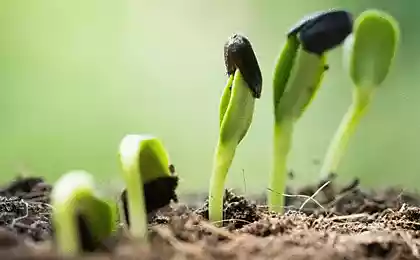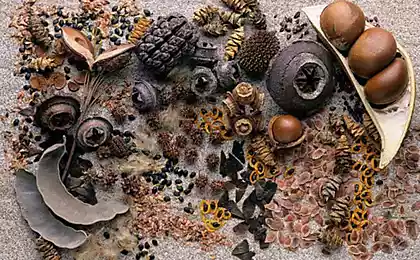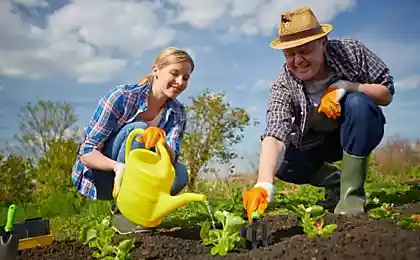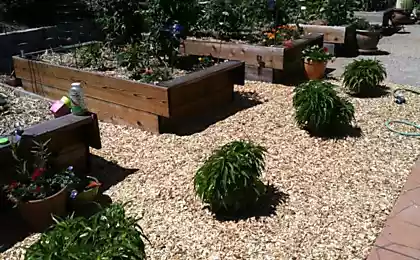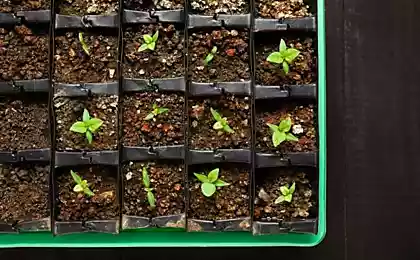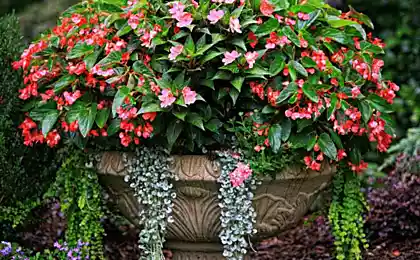126
Why you should not water the seeds after sowing
For many gardeners, watering seeds after planting is a habit. I buried the seeds in the soil and immediately, as usual, watered.

And then the questions begin: why do seedlings not grow, why do seedlings wither, why do they develop much slower than their neighbors?

No, we do not call for germination of seeds in dry soil. But you have to moisten it according to the rules. And here are the details with which "Site" Today we will introduce our readers.
Watering seeds after planting It is important to remember: to help the sprout break through the thickness of the earth to the sun, water the soil should be before sowing, and not immediately after it. There are at least two main reasons for this.

First, the watered land is compacting. Its particles stick together, forming a strong crust under the sun. The newly planted seeds are “sealed” in the planting grooves and pits.
In addition, the normal “breathing” of the root system of sprouts is difficult. After some time, the soil will dry up, but the ideal moment for the development of plants will be missed.

Second, water pulls the smallest seeds deep into the soil. Most often, such seedlings do not rise at all, and if they rise, then much later than the specified period. In the future, the plant becomes weak and painful.
Water the soil should be only before planting seeds and preferably settled with warm water. First make grooves, then pour them abundantly and wait for all the water to soak up the soil. Now we can deepen the seeds.
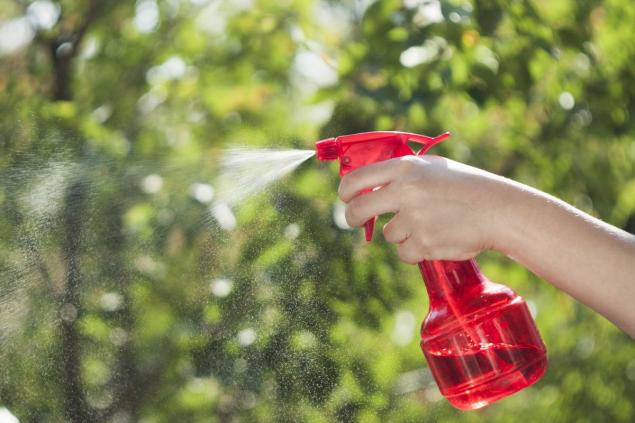
If you still need to moisten the soil a little after sowing, do it with a spray gun. Before the appearance of sprouts, the bed can be covered with a transparent film. This will help maintain moisture in the soil.
Planting seeds in open ground, it is necessary to take into account a lot of factors: the size of the seeds, the physical properties of the soil, its humidity, the period of germination of the seeds, the depth of the planting, the weather and the season.

If the soil is light, then small seeds can be planted to a depth of half a centimeter, medium seeds - 1.5 cm, large seeds in light soil can be buried up to 3 cm.
In summer, the seeds should be buried to a greater depth than in spring. This is explained by the fact that the soil warms up better and the water from the upper layer of the soil wakes up faster.

If the weather is warm, then sowing pre-soaked seeds gives good results. In cold and rainy times, this, on the contrary, can lead to rotting of seeds.
Knowing these simple rules will help you grow healthy plants from seeds without reducing their chances of germination.

And then the questions begin: why do seedlings not grow, why do seedlings wither, why do they develop much slower than their neighbors?

No, we do not call for germination of seeds in dry soil. But you have to moisten it according to the rules. And here are the details with which "Site" Today we will introduce our readers.
Watering seeds after planting It is important to remember: to help the sprout break through the thickness of the earth to the sun, water the soil should be before sowing, and not immediately after it. There are at least two main reasons for this.

First, the watered land is compacting. Its particles stick together, forming a strong crust under the sun. The newly planted seeds are “sealed” in the planting grooves and pits.
In addition, the normal “breathing” of the root system of sprouts is difficult. After some time, the soil will dry up, but the ideal moment for the development of plants will be missed.

Second, water pulls the smallest seeds deep into the soil. Most often, such seedlings do not rise at all, and if they rise, then much later than the specified period. In the future, the plant becomes weak and painful.
Water the soil should be only before planting seeds and preferably settled with warm water. First make grooves, then pour them abundantly and wait for all the water to soak up the soil. Now we can deepen the seeds.

If you still need to moisten the soil a little after sowing, do it with a spray gun. Before the appearance of sprouts, the bed can be covered with a transparent film. This will help maintain moisture in the soil.
Planting seeds in open ground, it is necessary to take into account a lot of factors: the size of the seeds, the physical properties of the soil, its humidity, the period of germination of the seeds, the depth of the planting, the weather and the season.

If the soil is light, then small seeds can be planted to a depth of half a centimeter, medium seeds - 1.5 cm, large seeds in light soil can be buried up to 3 cm.
In summer, the seeds should be buried to a greater depth than in spring. This is explained by the fact that the soil warms up better and the water from the upper layer of the soil wakes up faster.

If the weather is warm, then sowing pre-soaked seeds gives good results. In cold and rainy times, this, on the contrary, can lead to rotting of seeds.
Knowing these simple rules will help you grow healthy plants from seeds without reducing their chances of germination.



